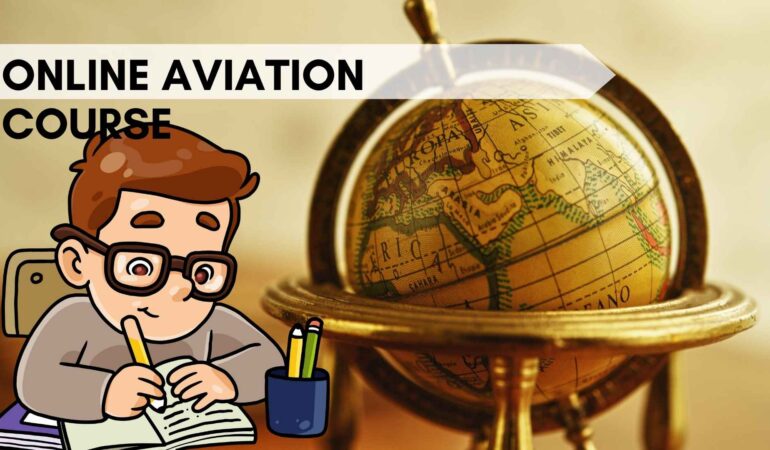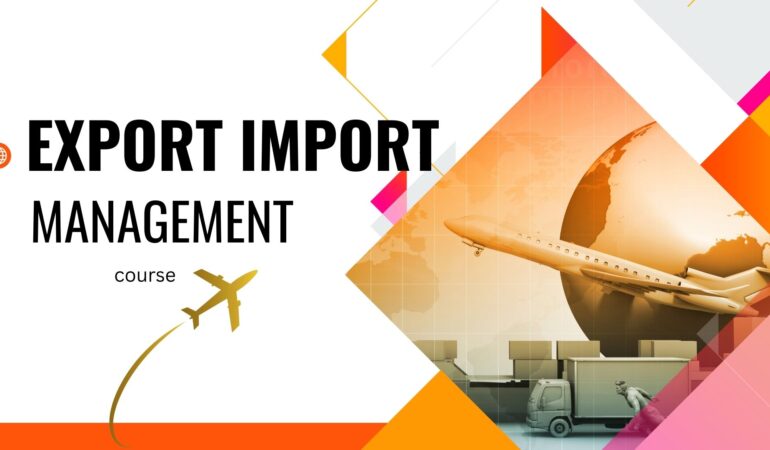Discover Powerful Types of GST: Your Complete Guide
Discover Powerful Type of GST: Your Complete Guide

Table of Contents
- Introduction to GST
- 1.1 What is GST?
- 1.2 History of GST in India
- 1.3 Why GST was Introduced
- Understanding the GST Structure
- 2.1 Types of GST: CGST, SGST, IGST & UTGST
- 2.2 How GST Replaced the Previous Tax System
- GST Registration
- 3.1 Who Should Register for GST?
- 3.2 Documents Required for Registration
- 3.3 Step-by-Step Registration Process
- GST Rates and Slabs
- 4.1 GST Rate Structure (5%, 12%, 18%, 28%)
- 4.2 Products and Services under Each Slab
- 4.3 Items Exempted from GST
- Input Tax Credit (ITC)
- 5.1 What is Input Tax Credit?
- 5.2 Eligibility for ITC
- 5.3 Common Mistakes in ITC Claims
- GST Returns and Filing
- 6.1 Types of GST Returns
- 6.2 Filing Deadlines
- 6.3 Penalties for Late Filing
- GST Compliance and Invoicing
- 7.1 Format of GST Invoice
- 7.2 Mandatory Inclusions in Invoices
- 7.3 Importance of Timely Invoicing
- GST for Businesses
- 8.1 GST Impact on Small Businesses
- 8.2 Composition Scheme
- 8.3 E-Way Bill System
- Benefits of GST
- 9.1 For the Government
- 9.2 For Businesses
- 9.3 For Consumers
- Challenges of GST Implementation
- 10.1 Technical Issues
- 10.2 Compliance Burden
- 10.3 Common Criticisms
- Recent Updates and Amendments in GST
- 11.1 Latest GST Council Decisions
- 11.2 Notable Legal Rulings
- GST Portal Overview
- 12.1 Features of the GSTN
- 12.2 Services Available on the Portal
- GST and the Indian Economy
- 13.1 Economic Growth and GST
- 13.2 GST’s Role in Formalizing the Economy
- Case Studies & Real-World Examples
- 14.1 GST Impact on Retail Industry
- 14.2 GST in E-commerce
- Conclusion
- 15.1 Key Takeaways
- 15.2 Future of GST in India
- FAQs About GST
Let me know if you want to add anchor links to each section for navigation or style it using CSS!
Introduction of GST
The Goods and Services Tax (GST) is a revolutionary step in India’s tax reform history. Introduced on 1st July 2017, GST replaced multiple indirect taxes like VAT, Service Tax, Excise Duty, and more. It created a unified taxation system, bringing transparency and ease for both taxpayers and the government.
The GST framework is divided into different categories, each designed to ensure fair distribution of tax between the Centre and the States. These categories are known as the Type of GST.
Types of GST in India: The Complete 2025 Guide for Businesses and Consumers
The Types of GST in India are crucial to understand in 2025, especially for both businesses and consumers. GST, or Goods and Services Tax, is a unified tax structure, and knowing the Types of GST helps you stay compliant and financially smart.
There are four major Types of GST applicable in India. These include CGST, SGST, IGST, and UTGST. CGST and SGST are Types of GST applied to intra-state transactions—where the seller and buyer are in the same state. IGST, another among the Types of GST, is applied to inter-state transactions, and UTGST is applicable in Union Territories.
Understanding the Types of GST helps streamline tax payments and input tax credits. Businesses benefit from knowing which Types of GST apply to their services or products. Consumers also indirectly benefit because the Types of GST eliminate the cascading tax effect, ultimately lowering costs.
The Types of GST in India also promote transparency and reduce tax evasion. Whether you’re an e-commerce seller, manufacturer, service provider, or retailer, identifying the right Types of GST is vital for invoicing and compliance.
Types of GST in India: Everything You Need to Know About CGST, SGST, IGST & UTGST
Understanding the Types of GST is vital for every business operating in India. The Indian tax system underwent a major transformation with the introduction of GST in 2017, and the Types of GST became the foundation of this new tax regime. There are four main Types of GST: CGST (Central Goods and Services Tax), SGST (State Goods and Services Tax), IGST (Integrated Goods and Services Tax), and UTGST (Union Territory Goods and Services Tax). Each of these Types of GST serves a specific purpose in taxation based on the nature and location of transactions.
What is GST and Why It Was Introduced?
GST is a unified indirect tax that replaced a complex structure of various central and state-level taxes. Types of GST It was introduced on July 1, 2017, with the aim to simplify the tax system, promote transparency, reduce tax evasion, and make it easier for businesses to operate across India.
Before GST, there were taxes like:
VAT
Service Tax
Excise Duty
Entry Tax
Luxury Tax
… and many more. the Type of GSTThese often overlapped, creating a tax-on-tax (cascading effect) situation.
GST eliminated this by combining all major indirect taxes into one.

Key Features of GST
Goods and Services Tax (GST) is a unified, comprehensive indirect tax that has replaced multiple indirect taxes in India. One of the key features of GST is its “one nation, one tax” approach, promoting uniformity across the country. GST is destination-based, meaning the tax is collected at the point of consumption rather than origin, ensuring fair revenue distribution among states.
Another major feature is the elimination of cascading taxes, as GST allows seamless input tax credit across the supply chain. It covers a wide range of goods and services, bringing most businesses under a single tax regime. GST has multiple tax slabs (0%, 5%, 12%, 18%, and 28%), depending on the type of goods and services.
One Nation, One Tax
Destination-Based Tax
Input Tax Credit Across the Supply Chain
Online Compliance System
Uniformity in Tax Rates
Understanding the Types of GST in India
If you’re a business owner or a curious taxpayer, understanding the Types of GST is essential. In India, the Types of GST include CGST, SGST, IGST, and UTGST. These Types of GST were introduced to create a unified and transparent tax structure across the country. The Types of GST apply differently depending on whether a transaction is intra-state or inter-state. For example, CGST and SGST are applied to intra-state sales, while IGST is used for inter-state sales. UTGST is a type applied in Union Territories. All these Types of GST work together to remove the cascading effect of taxes. Businesses must understand the Types of GST to ensure proper compliance and to benefit from input tax credit systems. Whether you’re just starting or already operating, knowing the Types of GST is crucial for efficient tax management. So, make sure you’re aware of the Types of GST and how each type affects your business.
The term Type of GST refers to the different components of GST that apply depending on whether the transaction is within a state or between states. Here’s a quick look at each Type of GST:
Type of GST
1. CGST – Central Goods and Services Tax
CGST is collected by the central government on all intra-state (within the same state) supplies of goods and services.
📌 Example:
Let’s say a business in Mumbai, Maharashtra sells a refrigerator to a customer also located in Mumbai.
Cost of refrigerator (before tax): ₹30,000
GST rate applicable: 18%
💡 Where does CGST go?
Straight to the central government’s treasury. It helps fund central infrastructure, defense, and other national services.
2.SGST – State Goods and Services Tax
SGST is the counterpart of CGST and is collected by the state government on the same intra-state transactions.
Using the same example, the 18% GST is split:
9% CGST → Centre
9% SGST → Delhi Government
📌 Why is SGST important?
The State Goods and Services Tax (SGST) is one of the most crucial components of the Type of GST system in India. It is the Type of GST applied by the State Government on intra-state transactions (when goods or services are sold within the same state). SGST plays a key role in the smooth functioning of the GST structure and is vital for both the central and state economies.
3.IGST – Integrated Goods and Services Tax
IGST is applied when goods or services move between states or in the case of imports/exports.
📌 Example:
Integrated Goods and Services Tax (IGST) is an essential Type of GST in India’s tax system. It applies to inter-state transactions, meaning when goods or services move from one state to another. IGST, as a Type of GST, ensures smooth and fair taxation across state borders and promotes the concept of one nation, one tax.
💰 Who gets the money?
The Centre collects IGST initially and then shares the revenue with the state where the goods are consumed.
4.UTGST – Union Territory Goods and Services Tax
UTGST is similar to SGST Type of Gst but applicable in Union Territories without a legislature (like Lakshadweep, Andaman & Nicobar Islands).
📌 Example:
You own a store in Port Blair and sell a product locally. You charge:
9% CGST
9% UTGST
UTGST ensures that Union Territories can also generate local tax revenue for development and services.
📊 GST Rate Structure

The Goods and Services Tax (GST) is a single, unified tax system designed to replace multiple indirect taxes in India. It simplifies the taxation structure and promotes a transparent economy. There are five key taxes under this system, each known as a Type of GST.
India has 5 major GST slabs:
0%: Fresh fruits, vegetables, milk
5%: Essentials like tea, coffee, edible oil
12%: Processed food, cell phones
18%: Soaps, shampoos, restaurants
28%: Luxury cars, cigarettes, ACs
🧾 GST Rate Structure in India
India follows a multi-slab GST rate structure to ensure essential goods are taxed minimally while luxury goods are taxed higher.India follows a multi-tiered GST rate structure with four main slabs and a few special rates. Based on the nature of goods or services, different rates are applied under each Type of GST.
| GST Rate | Types of Goods/Services |
|---|---|
| 0% | Fresh fruits, vegetables, milk |
| 5% | Essential items like tea, coffee, edible oils |
| 12% | Processed foods, computers |
| 18% | Electronics, toiletries, insurance |
| 28% | Luxury cars, ACs, sin goods |
Who Needs to Register Under GST?
Legal Compliance
Businesses must register to legally collect and pay taxes under any Type of GST—including CGST, SGST, IGST, or UTGST.Collect GST from Customers
Only registered businesses can charge GST and apply the correct Type of GST on their invoices.Claim Input Tax Credit (ITC)
Registration allows businesses to claim ITC on each Type of GST paid—helping reduce their overall tax burden.Required for Inter-State Transactions
If you’re supplying goods/services across states, IGST, a major Type of GST, is applicable—registration is mandatory.Participation in E-commerce
Sellers on online platforms must be registered to charge the appropriate Type of GST and stay compliant.Boosts Business Credibility
A registered GST number assures clients you’re following tax laws and applying the right Type of GST.Avoid Penalties and Fines
Not registering when required can lead to legal action and penalties under any Type of GST law.
📝 How GST is Applied Based on Transaction Type
| Transaction Type | GST Type | Who Collects? |
|---|---|---|
| Intra-state | CGST + SGST | Centre + State |
| Inter-state | IGST | Centre (then shares with state) |
| Within Union Territory | CGST + UTGST | Centre + UT Admin |
The Role of Input Tax Credit (ITC)
One of the best things about GST is Input Tax Credit. It allows businesses to claim credit for taxes paid on purchases used in their business.
📌 Example:
You pay ₹1,000 GST on raw materials. You sell the finished product and collect ₹1,500 GST. You only need to pay ₹500 to the government (after deducting ITC of ₹1,000).
___Benefits:
Eliminates tax-on-tax
Reduces overall costs
Promotes compliance
🎯 Benefits of Understanding GST Types
types of gst Helps businesses plan better
Enhances type of gst in accounting clarity
Aids compliance and ITC claims
Helps consumers understand billing in type of gst
📋 GST Registration – Who Should Register?
You must register under GST if:
Your turnover exceeds ₹40 lakhs (goods) or ₹20 lakhs (services)
You engage in inter-state trade
You operate an e-commerce business
You are a casual taxable person
⚠️ Common Challenges with GST
Tech glitches on the GST portal
Frequent rule changes
Confusion around return filing deadlines
Limited awareness in rural areas
🔍 Common GST Return Forms
| Form | Purpose |
|---|---|
| GSTR-1 | Outward sales |
| GSTR-3B | Summary return |
| GSTR-9 | Annual return |
GST in Different Sectors
Manufacturing:
Seamless ITC on raw materials
Simplified tax reporting
Service Sector:
Clear tax structure
Uniform rate across India
E-commerce:
Special GST returns like GSTR-8
Mandatory TCS (Tax Collected at Source)
🔧 How GST Simplifies Taxation
type of gst Eliminates multiple tax filings
Online system for transparency
Uniformity in tax rates across India
Simplifies logistics with fewer checkpoints
🏛️ GST Council: The Decision Maker
The GST Council is the key decision-making body responsible for the administration, structure, and rates of the Goods and Services Tax (GST) in India. It plays a crucial role in shaping how each Type of GST—namely CGST, SGST, IGST, and UTGST—is implemented across the country.
Functions of the GST Council
Recommend GST Rates
The Council decides which goods and services fall under which slab, directly affecting how each Type of GST is applied—whether it’s CGST, SGST, or IGST.Make Decisions on Exemptions
The Council reviews what should be taxed and what should be exempt under each Type of GST, ensuring fairness and economic balance.Harmonize Laws Across India
To ensure uniform implementation of each Type of GST, the Council harmonizes the rules and procedures across states.Resolve Disputes Between States and Centre
Any disagreement related to the implementation of a Type of GST (e.g., IGST credit distribution) is resolved by the Council.Update Threshold Limits
The Council decides turnover limits for registration under each Type of GST, such as when to register under CGST and SGST.

.Advantages of the Different Types of GST
Understanding the different types of GST — CGST, SGST, IGST, and UTGST — is not just important for tax compliance, but also brings several benefits to businesses, consumers, and the government. Let’s break down the key advantages of each type of gst
1. One Nation, One Tax System
GST merges central and state taxes into a single system. Every Type of GST—like CGST for the Centre and SGST for the State—ensures tax uniformity across India, replacing multiple indirect taxes.
2. Elimination of Cascading Taxes
Before GST, taxes were charged on top of other taxes. Now, with each Type of GST applied uniformly and Input Tax Credit (ITC) allowed, tax-on-tax is eliminated.
3. Simplified Tax Compliance
GST brings in standardized return filing, payment, and registration processes. Whether you’re dealing with IGST on inter-state trade or SGST on local sales, each Type of GST follows the same process.
4. Boosts Ease of Doing Business
GST allows businesses to operate seamlessly across states without multiple tax registrations. IGST as a Type of GST makes inter-state sales smoother and faster.
5. Encourages Transparency and Accountability
Since GST is tech-based, all returns are online. Businesses clearly mention each Type of GST in their invoices, ensuring transparency and reducing tax evasion.
6. Improved Logistics and Distribution
With the same Type of GST rates across the country, businesses no longer need to set up warehouses in each state, leading to faster and more efficient distribution.
.Disadvantages of the Different Types of GST
While the Goods and Services Tax (GST) has brought significant reforms to India’s taxation system, it’s not without its challenges. The type of gst division into CGST, SGST, IGST, and UTGST can create certain complexities for businesses and individuals alike. Let’s take a closer look at the disadvantages associated with the different type of GST:
1. Complexity for Small Businesses
Although GST simplifies the overall tax system, the presence of multiple Type of GST can still be confusing for small business owners. Understanding and applying CGST, SGST, or IGST correctly requires professional help.
2. High Compliance Burden
Businesses must file multiple returns and reports under each Type of GST. For example, a trader dealing in both local and inter-state sales must manage SGST and IGST, increasing compliance effort and cost.
3. Increased Operational Costs
Due to the complexity of rules under each Type of GST, many small and medium enterprises must hire tax professionals or invest in accounting software—raising operational expenses.
4. Initial Implementation Challenges
During rollout, businesses faced technical issues and confusion due to different Type of GST rules and portal errors. It caused disruptions, especially for those unfamiliar with digital systems.
5. Unclear Treatment of Some Goods and Services
Not all products are taxed uniformly under every Type of GST. Petroleum, alcohol, and electricity are still outside the GST scope, making the tax structure incomplete and affecting the true potential of each Type of GST.
6. Cash Flow Issues Due to Delayed ITC
Under each Type of GST, businesses claim Input Tax Credit (ITC) on taxes paid. However, delays in ITC processing can affect cash flow, especially for startups and MSMEs.
Why is GST Applied? Purpose of Applying GST in India
The Goods and Services Tax (GST) is not just a tax; it’s a game-changer for the Indian economy. type of gst Introduced on July 1, 2017, GST was implemented to bring simplicity, transparency, and efficiency to the country’s indirect tax system. But why exactly is GST applied? Let’s break it down.
The Need for GST
Before GST, India had a complicated tax structure. Different states had different type of gst rates and rules. Businesses had to deal with multiple taxes like VAT, service tax, excise duty, entry tax, and more. This system created confusion, increased costs, and led to tax-on-tax — known as the cascading effect.
To solve these issues, type of GST was introduced as one unified tax on the supply of goods and services. It is a destination-based tax, meaning it is applied where the product or service is consumed, not where it’s produced.
Purpose of Applying GST
To Simplify the Tax System
GST replaces multiple indirect taxes with a single tax, making compliance easier for businesses and authorities.
Unification of Tax System:
type of GST consolidates multiple taxes into one system, simplifying compliance for businesses through CGST, SGST, and IGST.Elimination of Cascading Taxes:
The Type of GST system allows businesses to claim input tax credit, eliminating the cascading effect of taxes.Encouragement of Inter-State Trade:
IGST, as a Type of GST, facilitates smooth inter-state transactions without tax barriers, boosting national trade.Simplification of Tax Processes:
The introduction of CGST, SGST, and IGST simplifies the process of tax filing, payment, and documentation across states.Increased Compliance and Transparency:
The Type of GST structure ensures clear records of transactions, making it easier to monitor tax compliance and reduce evasion.










